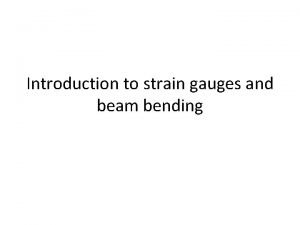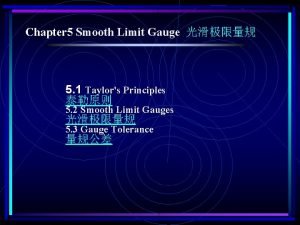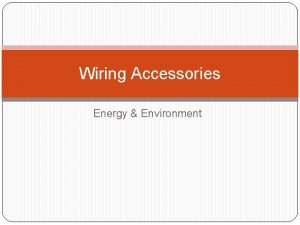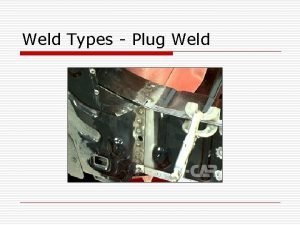SECTION 4 1 LIMIT GAUGE 1 Limit Plug






- Slides: 6

SECTION 4. 1 LIMIT GAUGE

1. Limit Plug Gauge The "GO" plug gauge is the size of the lower limit of the hole, while the ‘No Go’ plug gauge corresponds to the upper limit of the hole. In use, the "GO" end should fully enter the part; the "NO GO" end should not. GO NO GO

2. Snap Gauge The "GO" snap gauge is of a size corresponding to the upper limit of the shaft, while the "NO GO" snap gauge corresponds to the lower limit of the shaft. In use, the "GO" end should fully enter the part; the "NO GO" end should not. GO NO GO

Taylor’s Principle Taylor’s principle is the foundation of the limit gauge design. According to Taylor’s principle, the "GO" gauges should check all the possible elements of dimensions at a time (roundness, size, location etc. ) and the "NO GO" gauge should check only one.

Taylor’s Principle To plug gauge, "GO" gauge must be of corresponding section and preferably full length of hole so that straightness of hole can also be checked. The “NO GO" gauge is relatively short and its function is dependent not only on the diameter but also on the circularity of the hole. Dfe≧Dmin, Da≦Dmax

Taylor’s Principle To snap gauge, "GO" gauge must be of corresponding section and preferably full length of shaft so that straightness of shaft can also be checked. The “NO GO" gauge is relatively short and its function is dependent not only on the diameter but also on the circularity of the shaft. dfe ≦dmax da ≧dmin











